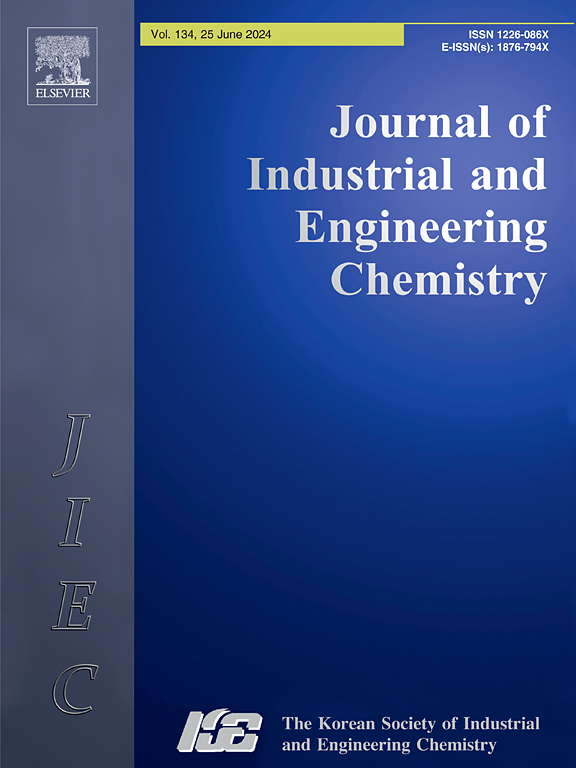Investigation of the hydrogen adsorption properties on titanium metal under vacuum conditions
IF 5.9
3区 工程技术
Q1 CHEMISTRY, MULTIDISCIPLINARY
Journal of Industrial and Engineering Chemistry
Pub Date : 2024-10-29
DOI:10.1016/j.jiec.2024.10.045
引用次数: 0
Abstract
The lightweight nature and exceptional temperature resistance of titanium (Ti) render it a highly favored material for spacecraft applications. However, Ti is susceptible to various corrosion phenomena, particularly hydrogen embrittlement, which can significantly impact the functionality and lifespan of spacecraft. As experimental methods encounter challenges when investigating the internal mechanism of rapid-onset hydrogen embrittlement, we employ a molecular dynamics approach to explore the adsorption, diffusion, and dissociation behavior of hydrogen atoms and molecules (H/H2) on Ti metal surfaces and oxidation products. The adsorption energies of the four bound forms, H-Ti, H-TiO2, H2-Ti, and H2-TiO2, during adsorption are 7.577 eV (hcp), 0.608 eV (bridge), nearly 0 eV, and 0.1127 eV (bridge), with maximum energy barriers for diffusion/dissociation of 1.045 eV, 2.694 eV, 0.3735 eV, and 2.612 eV, respectively. Thus, Ti metal readily undergoes chemical adsorption with hydrogen atoms while promoting dissociation of molecular hydrogen on its surface. Consequently, hydrogen adsorption onto the Ti metal surface and subsequent entry of hydrogen atoms into its bulk structure are enhanced, ultimately increasing susceptibility to hydrogen embrittlement. However, adsorption is limited once Ti metal oxidizes to form a protective surface layer of TiO2 due to reduced reactivity at the oxide–metal interface.
求助全文
约1分钟内获得全文
求助全文
来源期刊
CiteScore
10.40
自引率
6.60%
发文量
639
审稿时长
29 days
期刊介绍:
Journal of Industrial and Engineering Chemistry is published monthly in English by the Korean Society of Industrial and Engineering Chemistry. JIEC brings together multidisciplinary interests in one journal and is to disseminate information on all aspects of research and development in industrial and engineering chemistry. Contributions in the form of research articles, short communications, notes and reviews are considered for publication. The editors welcome original contributions that have not been and are not to be published elsewhere. Instruction to authors and a manuscript submissions form are printed at the end of each issue. Bulk reprints of individual articles can be ordered. This publication is partially supported by Korea Research Foundation and the Korean Federation of Science and Technology Societies.

 求助内容:
求助内容: 应助结果提醒方式:
应助结果提醒方式:


